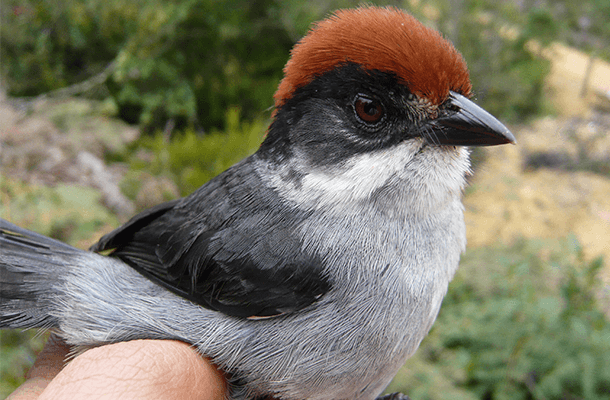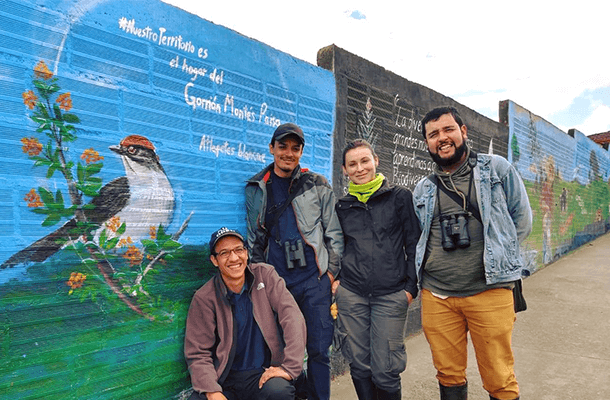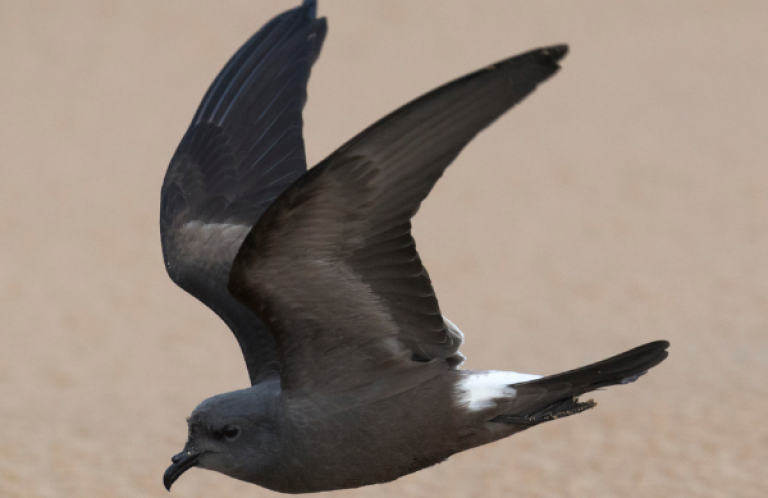Species Unseen for 47 Years Rediscovered Near Colombian Town Named for Miracles
Contact: Wendy Willis, American Bird Conservancy, Deputy Director of International Programs, 540-253-5780 | wwillis@abcbirds.org

Lost bird, found: The Antioquia Brushfinch had eluded observers since it was described as a new species 12 years ago. Photos by Sergio Chaparro-Herrera
(Washington, D.C., April 12, 2019) The Antioquia Brushfinch, a rusty-crowned Colombian songbird described as a new species 12 years ago, based solely on old museum specimens, eluded scientists until it was documented for the first time in the wild in January 2018. This discovery will be published later this year in the scientific journal Cotinga, in an article by researchers Rodolfo Correa Peña, Sergio Chaparro-Herrera, Andrea Lopera-Salazar, and Juan L. Parra.
Previously known only from three museum specimens collected as recently as 1971, the Antioquia Brushfinch was originally classified as belonging to a more widespread brushfinch species.
The first living bird of this newly described species was originally observed by Rodolfo Correa Peña on Jan. 7, 2018, as he was walking to Sunday mass. Documenting photos were taken the same month. Since then, the Colombian researchers have found additional birds in four patches of remnant habitat, all within the municipality of San Pedro de los Milagros – which translates to Saint Peter of Miracles – in the department of Antioquia.
The Antioquia Brushfinch was first described by ornithologist Thomas Donegan in 2007, after a review of brushfinch specimens in South American and European collections. Donegan noticed three specimens labeled from San Pedro de los Milagros and “Antioquia” generally that were marked as representing the widespread Slaty Brushfinch, but looked different. Two of these specimens were undated, and one was collected in 1971. Many feared that the species “discovered” in the museum drawers was extinct, after several searches over the last 12 years failed to find it.

Rodolfo Correa Peña (far right), Sergio Chaparro-Herrera (middle left), Andrea Lopera-Salazar (middle right), and Juan L. Parra (far left) rediscovered the Antioquia Brushfinch. They are standing next to a mural of this species in San Pedro de los Milagros. Photo by Andrea Lopera-Salazar
“Rodolfo Correa Peña's rediscovery of the Antioquia Brushfinch – seeing it alive for the first time since it's been declared a distinct species – was a miracle. And he first spotted the brushfinch on his way to Sunday mass!” says Wendy Willis, American Bird Conservancy's (ABC's) Deputy Director of International Programs. “It is also remarkable that this species occurs just outside the greater metropolitan area of Medellín, home to more than 3.7 million people, and that it has gone unnoticed until now.”
American Bird Conservancy has supported the research team's efforts to find more populations of this brushfinch since October 2018, as part of a larger effort to rediscover and conserve “lost” birds. The search for new subpopulations, led by Sergio Chaparro-Herrera, continues. Additionally, the team is investigating the bird's breeding behavior and the possible threat of nest parasitism by Shiny Cowbirds, which lay their eggs in other birds' nests, often to the detriment of the hosts' own young. This research is being conducted with support from a Skutch Research Award from the Association of Field Ornithologists.
Little habitat remains for the Antioquia Brushfinch, which is internationally recognized as a Critically Endangered species. Seventy-three percent of the land cover within the municipality of San Pedro de los Milagros has been converted to cattle pasture. Remaining habitat is under severe threat of conversion for pasture and cropland. While four populations of this species have been identified, fewer than 20 individual birds have been found so far.
“Despite the challenges, American Bird Conservancy is quite optimistic that the Antioquia Brushfinch can be saved from extinction,” says Daniel Lebbin, ABC's Vice President of Threatened Species. “Colombian researchers now know what kind of habitat to search and are continuing to find more birds. This brushfinch species is persisting in fairly small patches of low scrub close to people. Opportunities to protect remaining habitat patches as new reserves and to quickly restore working lands using silvipasture techniques [combining trees, forage, and livestock] hold great potential to benefit this species, but action must be taken quickly,” Lebbin says.
Similarly range-restricted and related species provide prime examples of how this species can be saved. “Jocotoco Foundation, ABC's partner in Ecuador, proved that we could bring back tiny populations of the imperiled Pale-headed Brushfinch through protection and management,” says Lebbin. At the time of the rediscovery of the Pale-headed Brushfinch, fewer than 70 individuals remained. But with proper management and land protection and restoration, this species rebounded and now numbers more than 200.
ABC and the research team are planning immediate actions to prevent the extinction of the Antioquia Brushfinch, including land protection, habitat restoration, and additional searches. If you would like to help, please consider donating to support ABC's work to help us advance this project and many others to conserve native birds and their habitats throughout the Americas.
###
American Bird Conservancy is a non-profit organization dedicated to conserving birds and their habitats throughout the Americas. With an emphasis on achieving results and working in partnership, we take on the greatest problems facing birds today, innovating and building on rapid advancements in science to halt extinctions, protect habitats, eliminate threats, and build capacity for bird conservation. Find us on abcbirds.org, Facebook, Instagram, and Twitter (@ABCbirds).


















































